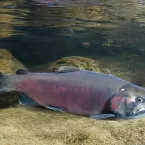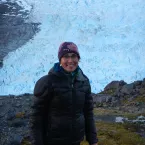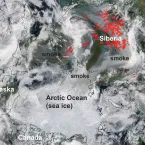Our Research
As climate changes, how do Earth's frozen areas affect our planet and impact society?
In this section
Related News & Stories
Filter by:

Feature Story
From 1980 to 2010, a young researcher used the sea ice concentration data from the National Snow and Ice Data Center (NSIDC) to forecast the arrival of Alaska's Chinook Salmon in the Yukon River.
Analysis - Sea Ice Today
Arctic sea ice extent in July tracked at record low levels for multiple individual days and for the month as a whole.

Analysis - Ice Sheets Today
Warm air from Europe's heat wave reached Greenland on July 29 and 30, setting temperature records at Summit Station and melting about 90 percent of the ice sheet surface from July 30 to August 3. Melt runoff was estimated at 55 billion tons during the interval.
Analysis - Sea Ice Today
Loss of ice extent through the first half of July matched loss rates observed in 2012, the year which had the lowest September sea ice extent in the satellite record.

Spotlight
NSIDC research scientist Twila Moon testified today before the U.S. House of Representatives Committee on Science, Space and Technology.
